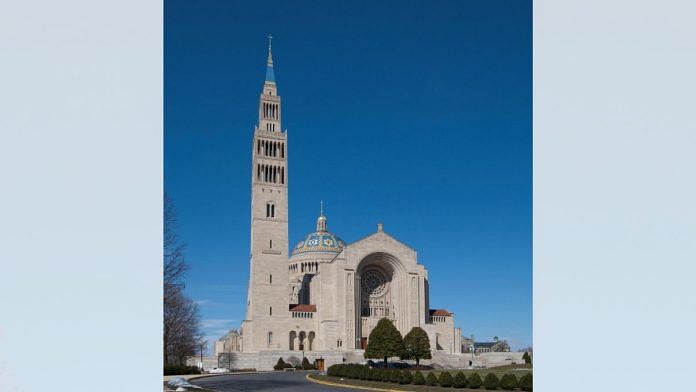New Delhi: After years of decline, the proportion of Americans identifying as Christians appears to be stabilising between 60 and 64 percent, according to the 2023-24 Religious Landscape Study published Wednesday by the Pew Research Center.
As part of the study, a survey of 36,908 Americans was conducted.
The Religious Landscape Study is the most extensive survey conducted by Pew, offering data on the size of religious groups in the United States—information which is not collected by the US Census. Pew has conducted three such surveys over the last 17 years, each with a sample size of more than 35,000.
The proportion of both Protestants and Catholics in the population has declined significantly since 2007, the study found. Protestants form the largest subgroup of Christians in the US, constituting 40 percent of US adults, while Catholics account for 19 percent.
Those who identify with other Christian denominations, including Greek and Russian Orthodox churches, the Church of Jesus Christ of Latter-day Saints, and Jehovah’s Witnesses, among others, make up three percent of US adults.
The proportion of Americans identifying with religions other than Christianity has shown significant growth, according to the study. Today, 1.7 percent of US adults identify as Jewish, 1.2 percent as Muslim, 1.1 percent as Buddhist, and 0.9 percent as Hindu.
Religiously unaffiliated adults—including atheists, agnostics, and those who responded “nothing in particular” when asked about their religion—account for 29 percent of the population. Growth among this group has plateaued after a long period of sustained increase, the Religious Landscape Study shows.
A large majority of Americans maintain a belief in spiritual and supernatural forces. While 79 percent believe there is something ‘spiritual’ beyond the natural world, even if one cannot see it, 70 percent believe in an afterlife—hell, heaven or both.
The percentage of Americans who pray daily has consistently remained between 44 and 46 percent since 2021, although it has declined significantly since 2007, according to the study. The proportion of the population attending religious services monthly has consistently hovered in the low 30 percent range, with 33 percent of US adults reporting they attend religious services at least once a month.
Young adults, aged between 18 and 24 years, are far less religious than older adults aged 74 and above. According to the survey, almost 80 percent of young adults are less likely to identify as Christians—almost double the proportion of older adults (46 percent) with the same view.
Comparisons based on gender affiliation to religion found that women report higher levels of religious affiliation, belief, and practice than men—a difference of 13 percentage points between the share of women and men who pray every day.
This is slightly lower than the 17 percentage points recorded in the 2007 survey.
The study also highlights the strong link between upbringing and an individual’s current religious identity, beliefs, and practices. It found that 74 percent of those who were raised in a religious environment and grew up in families which attended weekly religious services still identify with their childhood religion today.
However, 32 percent of US adults claim that religion is less important to them today than it was to their families during childhood, in contrast to 18 percent who say that religion has become more important to them than it was to their families when they were children.
Sneha Yadav is an intern with ThePrint. She graduated from the first batch of ThePrint School of Journalism.
(Edited by Radifah Kabir)
Also Read: Posture panic hits researchers. IITs, AIIMS, big hospitals use smart microscopes now




